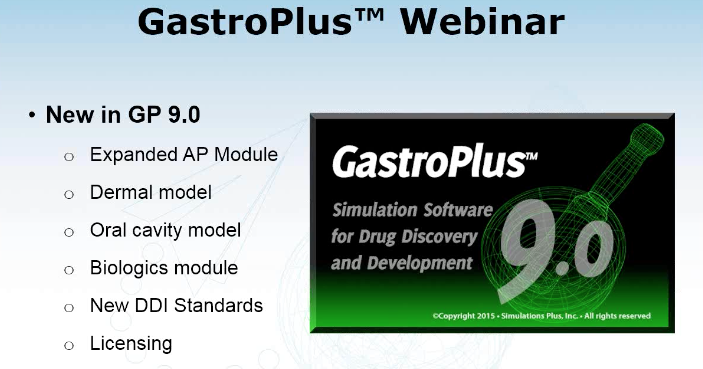Two new models, fraction unbound to liver microsomes and unbound human liver microsomal intrinsic clearance, were added to ADMET Predictor 7.2.

Implementing Toxicity Testing in the 21st Century (TT21C): Making safety decisions using toxicity pathways, and progress in a prototype risk assessment
Risk assessment methodologies in toxicology have remained largely unchanged for decades. The default approach uses high dose animal studies, together with human exposure estimates...

Toward Progressive Reporting of Modeling and Simulation Results – Part 1: Analysis of KIWI™ Metadata
Technical reports for pharmacometric modeling provide comprehensive documentation, typically including data assembly methods and disposition, modeling strategy, and analysis results. These reports, however…

Marine Drug Discovery Database (MDDD) – A Database of In silico Predicted Physico-Chemical, Drug Likeness and Toxicological Properties of Marine Compounds
Marine is one of the largest and richest natural resources of bioactive compounds.

What’s New In GastroPlus™ 9.0?
This informative webinar covers the new features in the latest version of GastroPlus™ 9.0.

Simulations Plus Releases ADMET Predictor Version 7.2
Enhances synergy between predicted properties and GastroPlus™ Version 9.0 modeling capabilities

Predicting the extent of metabolism using in vitro permeability rate measurements and in silico permeability rate predictions
The Biopharmaceutics Drug Disposition Classification System (BDDCS) can be utilized to predict drug disposition, including interactions with other drugs and transporter or metabolizing enzyme effects based...

An in silico expert system for the identification of eye irritants
This report describes development of an in silico, expert rule-based method for the classification of chemicals into irritants or non-irritants to eye, as defined by the Draize test.

Discovery of a Potent, Orally Available Dual CysLT1 and CysLT2 Antagonist with Dicarboxylic Acid
A potent, orally available dual CysLT1 and CysLT2 receptor antagonist with a dicarboxylic acid is described. 4-(3-(Carboxymethyl)-4-{(E)-2-[4-(4-phenoxybutoxy)phenyl]vinyl}-1H-indol-1-yl)butanoic acid...

Development of a Novel Oral Cavity Compartmental Absorption and Transit Model for Sublingual Administration: Illustration with Zolpidem
Intraoral (IO) delivery is an alternative administration route to deliver a drug substance via the mouth that provides several advantages over conventional oral dosage forms.

Simulations Plus Releases GastroPlus Version 9.0
Important new features expand market for flagship software product

In silico prediction of hERG inhibition
The voltage-gated potassium channel encoded by hERG carries a delayed rectifying potassium current (IKr) underlying repolarization of the cardiac action potential.

Simulations Plus Augments Marketing and Sales Organization with Addition of Seasoned Scientist
Dr. Michael Lawless to transition to Marketing and Sales Team.
Dr. Vijay Gombar joins the Company as leader of the Cheminformatics Studies Team.

Determination of Susceptibility Breakpoints for the Novel Oxazolidinone Tedizolid
Tedizolid is a novel oxazolidinone antibacterial with potent in vitro activity against a wide range of Gram-positive pathogens, such as Staphylococcus aureus (including methicillin-resistant S. aureus)...

Run Record for Model Development
The EMA and FDA recommend including a run record in your technical report to describe any major decisions and should include an overview of the steps taken during model development. KIWI 1.3, available in May 2015, will reduce the time taken to perform this task to just minutes.

Elucidation of the Multiple Activities of Abiraterone by a Synthetic Chemistry Approach
Objective: Novel agents to treat metastatic prostate cancer include a class of drugs which function primarily by inhibiting the action of the CYP17 enzyme, which results...

